The Blue Sky Center is building a creative economy in rural California
The New Cuyama townsite in California’s Santa Barbara County is relatively young. Built in the early 1950s by the Richfield Oil Company, it was a company-driven town where the company came in, built all the housing and stores and infrastructure, and moved workers in. And when the oil did not come, the company bailed on all of it.
The Blue Sky Center now occupies Richfield’s former headquarters, and the nonprofit’s Executive Director Em Johnson is acutely aware of the location’s history of extractive economics. It’s just one of the things she has kept in mind as she has developed the Center and its relationship with the New Cuyama community.
In 2012 the Zannon family, pistachio farmers who own the Santa Barbara Pistachio Company, decided to make a legacy impact investment in New Cuyama, which included all of the land, assets, and equipment for the development of a new nonprofit organization that would support entrepreneurs and build regional creative and economic resources in the Cuyama Valley.
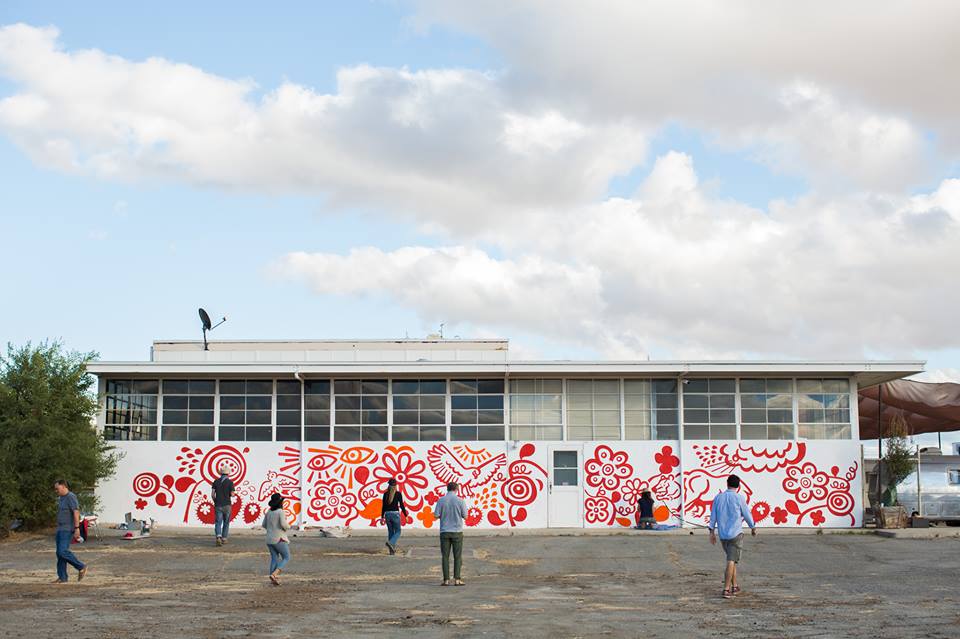
That new nonprofit organization was named the Blue Sky Center, and from 2014 to 2016, the oil company’s 23,000-square-foot former headquarters was cleaned up and brought back to life through the Zannons’ investment.
“[The Zannon family felt strongly] that the property has to be something that could be reinstituted for community ownership and small business development, so that the community could take ownership of it…really for the first time,” Johnson explains.
In 2016, the Blue Sky Center was officially introduced to Cuyama Valley. From the very beginning, Blue Sky was focused on developing its vision as a nonprofit, and it did so by holding “lots” of listening sessions with community members and outside stakeholders including politicians, corporate leadership, and academic leadership.
“A lot of the work initially was the work of neighbor building, and that has to be authentic,” says Johnson. “Those little things were a huge part of what directs our strategic plan now—saying ‘yes’ to everything and being anything the community wanted us to be, and being open to critique.”
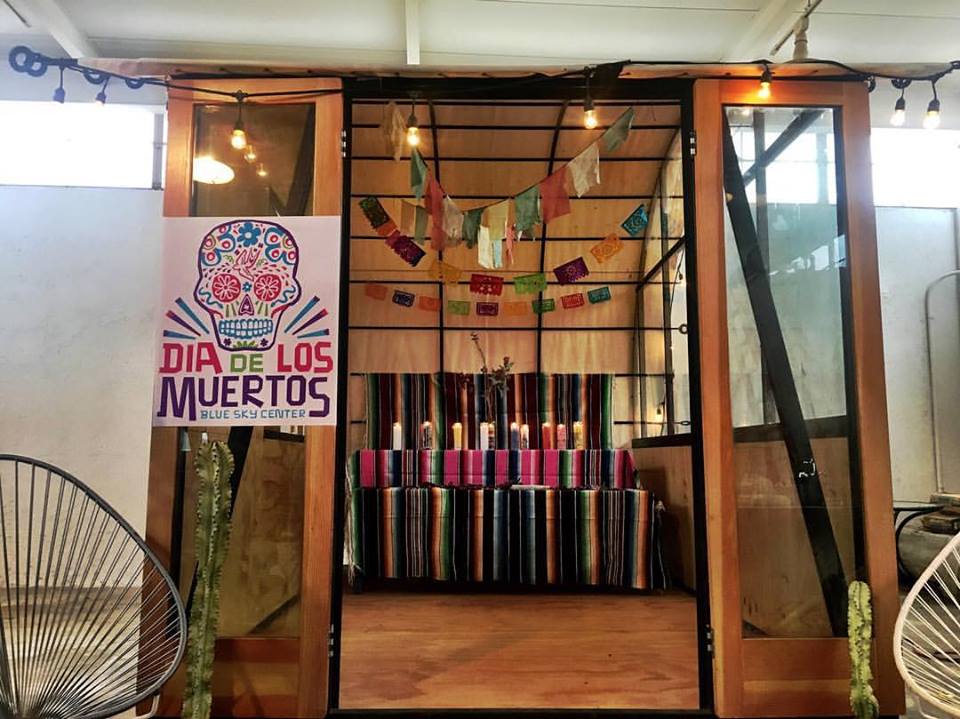
She says that they spent their time listening, thinking, and dissecting what they could do to build trust with the community and get this piece of property working for the community again.
“We learned a lot of people wanted to see deeper listening and action,” she says. At the same time, they were also building a reputation for actually doing the things they said they were going to do, deepening the community’s trust in this new organization.
If the first year was all about listening, then the next year, Johnson says, was all about saying “yes” to everything—every community fundraiser and culinary event that they were asked to participate in. They then created a strategic plan informed by all the things they had learned from the things they said “yes” to.
“We realized we really are an economic development organization using creative community building to create a resilient community,” Johnson says.
One question they asked themselves as an organization was, “How can we turn these assets we have here onsite to create a resilient model for community development and inspire ownership?”
One of the answers was to create the Cuyama Kitchen, Blue Sky’s mobile shared kitchen and community catering trailer available for anyone to use for catering events, cottage industry food businesses, cooking classes, or restaurant pilots.
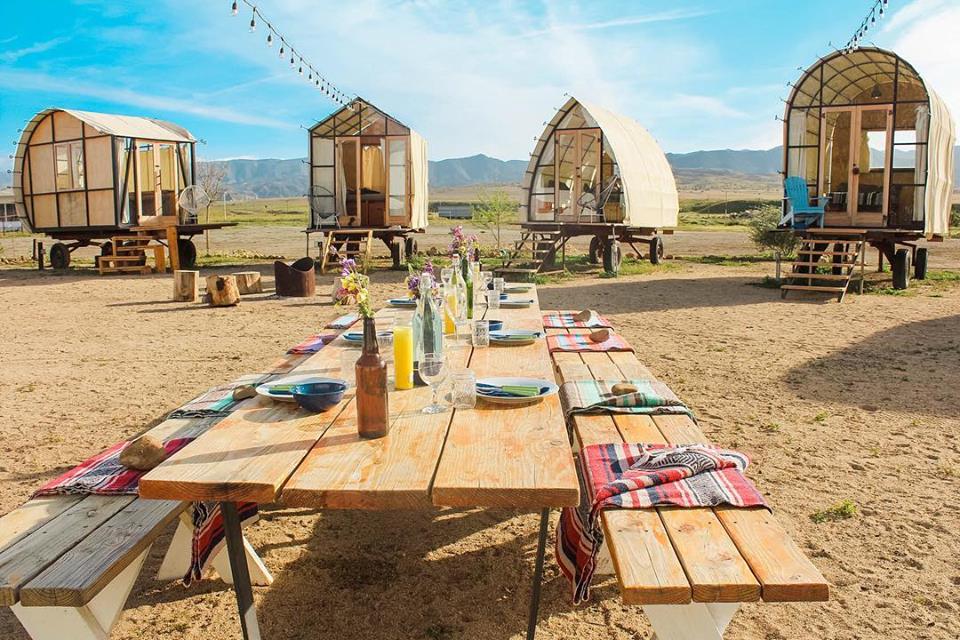
They also introduced Stay Cuyama, a revenue-generating hospitality branch of Blue Sky consisting of five unique Shelton Huts listed on Airbnb and Hipcamp that help to diversify the Cuyama Valley economy through tourism, and also bring awareness to their rural agricultural community.
“As a nonprofit, we’re always thinking how a nonprofit can earn revenue to support a resilient operation but also create jobs that have a ripple effect,” explains Johnson. “That was the ethos behind the hospitality business. Hosting visitors onsite helps to pay for some of that cultural neighbor-to-neighbor-building. We can track sales numbers to see how Stay Cuyama is affecting local stores—if it’s providing fulfillment to other businesses and individuals in the community who can gain from it.”
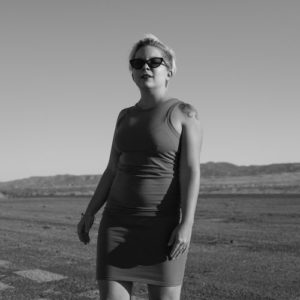
Johnson says that the Blue Sky Center emphasizes flexibility and adaptability in everything they do. Different constituents respond to different things: some want to dialogue over a private dinner in their homes; others want town hall-style meetings. Blue Sky also doesn’t start their programs with the intention that they have to continue on forever.
“This reflects our days and age and how we respond to our current economy, especially as it changes over time,” she says. “We can’t have just one core program and have our legacy based around building that program. We need adaptability in everything we do so we can try new things, fail fast, and allow for progressive new work rather than stymy it.”
Blue Sky Center now has programs that involve small business incubation; connecting food producers and consumers; cultivating a network of farmers, ranchers, and community members; hosting rural artist residencies and creative workshops; connecting school systems through academic partnerships; and providing direct job skills training.
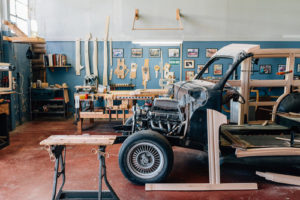
Their Made in Cuyama initiative offers direct technical assistance to startups through a partnership with Rural Community Assistance Corp. Johnson loves getting to work with small business owners and independent craftsmen like chefs, welders, and furniture makers, but she says Made in Cuyama has also highlighted a unique opportunity to connect these startups to the local agricultural community, furthering Blue Sky’s efforts of connecting neighbors and building the capacity for a resilient community.
“We’re in a breadbasket community of California, and our economy relies so much on large industrial agriculture,” Johnson says. “That’s the biggest issue and challenge here: agriculture and water politics. It’s been really fascinating to see how our small ranchers and farmers want to plug into Made in Cuyama and share resources so that what they’re growing is more accessible to restaurants and suppliers here and celebrates this culture of Cuyama Valley.”
Part of building a sustainable and resilient rural community also entails celebrating the things that make that rural community unique—its people and what they produce.
“There is a need in rural America to celebrate the abundance of what’s here,” says Johnson. Outside of rural communities, the general perception seems to be that rural communities need “help;” that they cannot sustain themselves on their own otherwise. “We want to flip the tables and show that rural areas can sustain themselves so that they’re no longer thought of as places that need continual help.”
She says that the Made in Cuyama initiative is bringing people together—farmers, neighbors—who haven’t spoken to each other in years, if ever (and not for any reasons of animosity; just lack of any reasons at all). And it’s happening organically, which was always the goal.
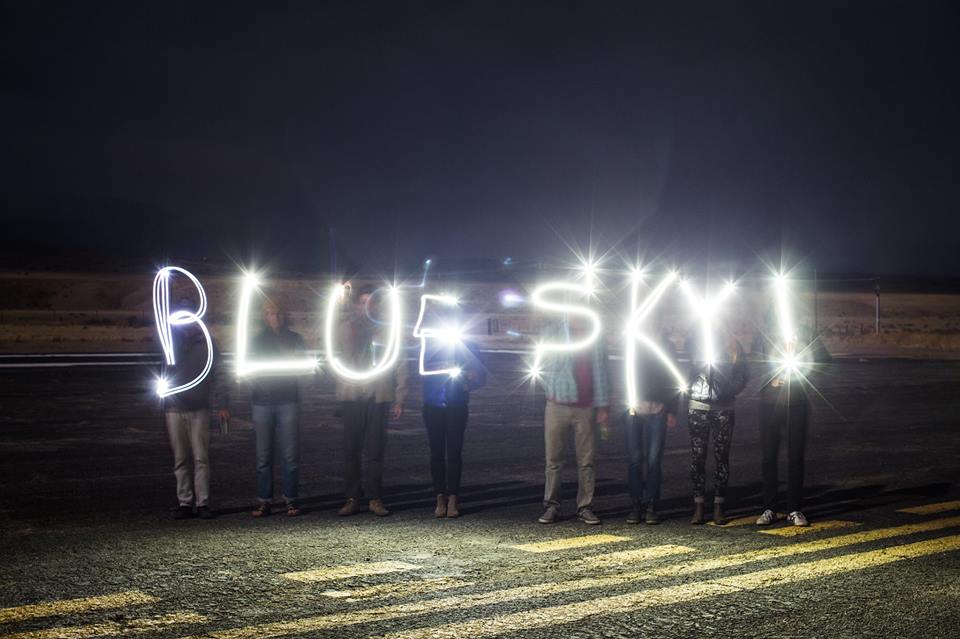
Part of Blue Sky’s strategic plan is to eventually pass along its programs and projects to local champions who will take them over, so that they are truly owned by the community.
But, Johnson notes, “You can’t just say, ‘I want a community champion.’ It’s not about ask-and-receive, but about if we can create spaces that feel safe and inclusive where individuals feel that they can step into these positions.”
Another part of Blue Sky’s strategic plan is utilizing creative community engagement by hiring rural practitioners and social practice artists to support the organization’s initiatives, including its programs and its research.
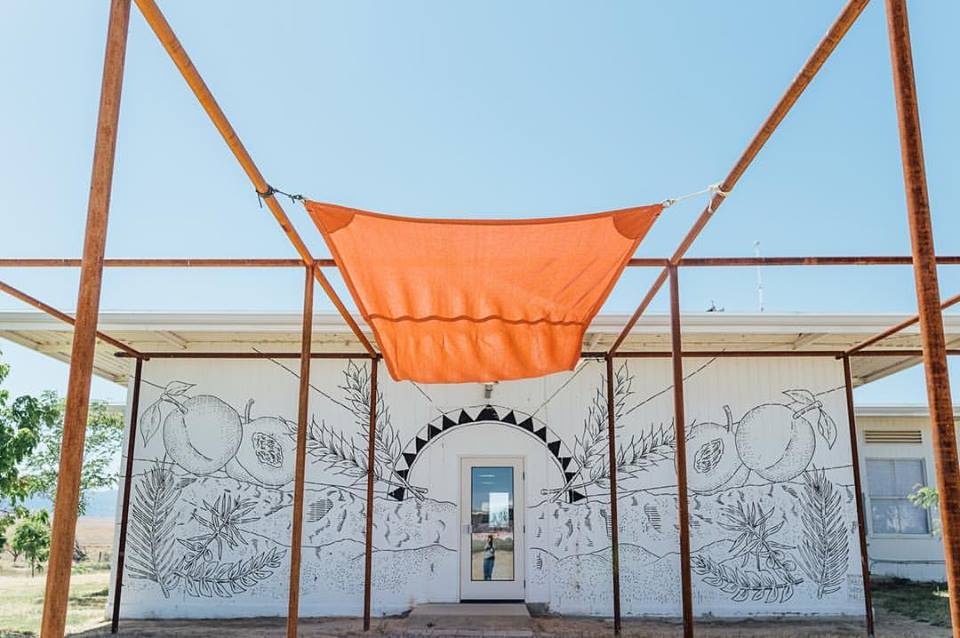
“By bringing in creative professionals, we can create more inclusive, safe spaces that include community members,” says Johnson. “It allows our organization to have a constant and refreshing check on who’s being included and who’s not.”
Research and data collection is another core part of what Blue Sky Center does, developing visually beautiful reports, case studies, and a general body of knowledge about the Cuyama Valley community that can then be presented to policymakers, foundation leaders, local stakeholders, and other communities to show what issues are most impacting their community, and also what Blue Sky is doing to address them.
“That’s what we can do to make some sort of impact and change some of the ideas they have about rural communities,” says Johnson, “and also show that we can’t just implement urban solutions on rural places.

(1) How do you like to collaborate?
We like to collaborate in a way that’s mutually beneficial. I really like to see how our collaboration is improving or innovating with that partner in a way that is also equally empowering, innovating, or impacting for us.
(2) How do you a start a project?
The best way to start a project is to include the collective wisdom of your people. You have to have your stakeholder provide wisdom into that project.
(3) How do you talk about your value?
Instead of development, we’re focused on resiliency and inclusion and abundance. Instead of creating projects or initiatives that only serve a small portion of the community, we’re taking time and authentically building relationships that can lead to community ownership and resilience that allows people to feel more powerful in their lives.
(4) How do you define success?
The most success I feel in our work is when a community member realizes or says out loud during an event, “I wanted to do this and now I feel capable. I want to take this and run with it.”
(5) How do you fund your work?
Through earned revenue through our hospitality business, and we’re seeking to create other for-profit ventures that we can reinvest in the work we do, as well as using regional and federal grants. We’re using philanthropy as a way for us to sustain as an organization.
